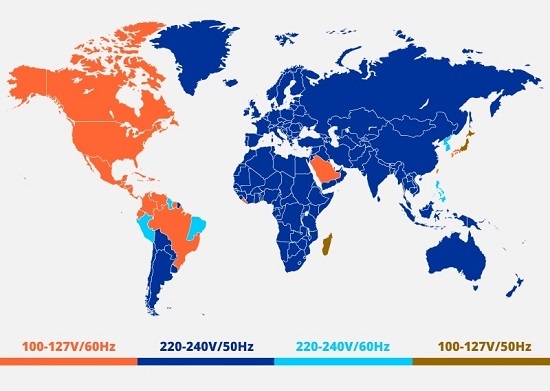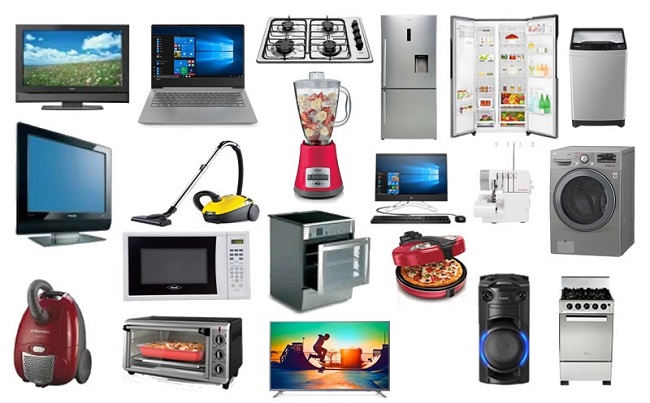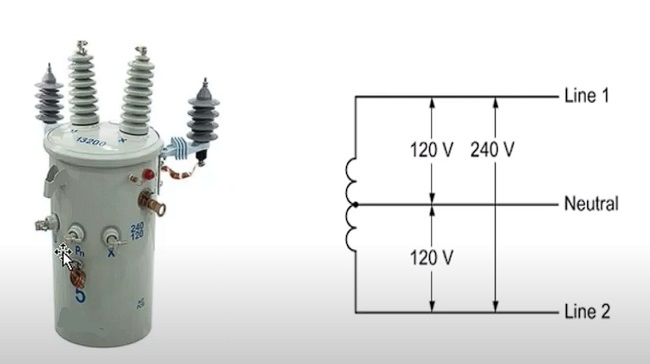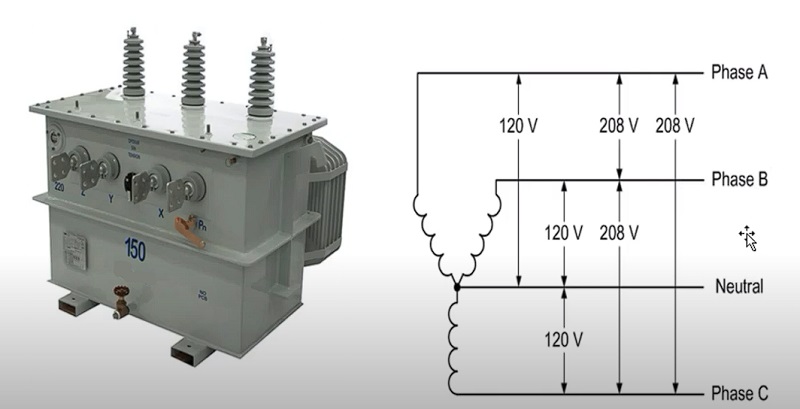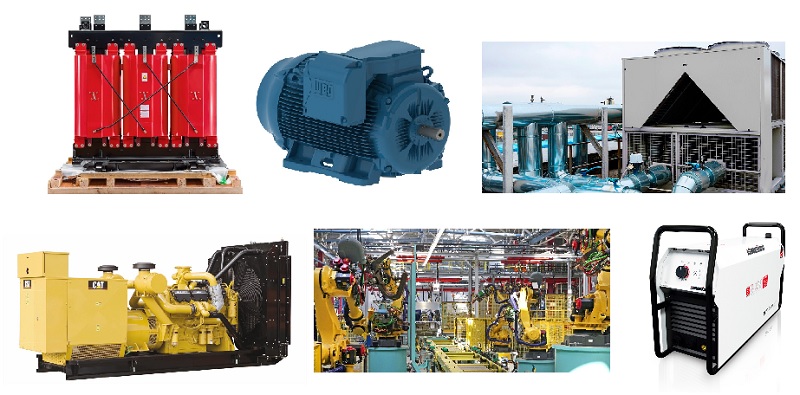Electrical equipment is commonly connected to single-phase, two-phase and three-phase systems with different voltages, it is very important to identify the number of phases to which the voltage refers, because there are cases in which there are equal voltages but different number of phases. For example, the case of the 220V voltage that in the United States is two-phase (FF) and in Europe it is single-phase (FN).
1F-Monophasic
This system is made up of a single phase (F) with respect to the system neutral (N), it is used to supply power to small loads, such as household appliances and lighting devices.
The feeding of a 1F single-phase equipment can be done from a single-phase transformer or, more commonly, from 3F three-phase transformers, taking any of the phases and the neutral.
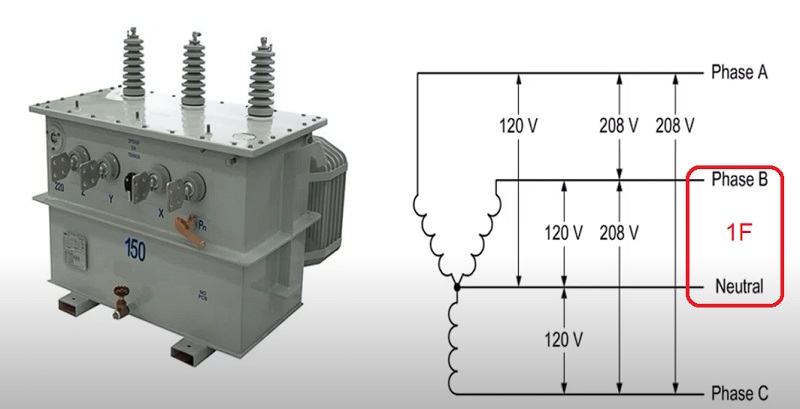
Single phase voltages in the world
The typical voltage of a single-phase system is 120V in countries like the United States, Canada, Central America and Latin America, while in Europe and other parts of the world the single-phase voltage is usually 230V, other single-phase voltages by region are:
- North America: 120V.
- Latin America: 110V, 127V, 220V, 240V.
- Europa: 220V, 230V, 240V.
- Asia: 100V, 110V, 120V, 220V, 230V, 240V.
- África: 220V, 230V, 240V.
- Oceania: 230V, 240V.
Single phase electrical equipment
Some electrical equipment that commonly comes with single phase (FN) connections are:
- residential lighting
- Ceiling and standing fans
- Toasters and bread toasters
- Blenders and mixers
- electric coffee pots
- electric kettles
- Electric furnaces
- Electric stoves
- Electric irons
- hair dryers
- televisions and monitors
- Sound equipment and radios
- Computers and laptops
- Printers and scanners
- Chargers for phones and other mobile devices
- Portable power tools, such as drills, circular saws, and sanders
- Water pumps for irrigation, agricultural and domestic applications
- Refrigerators and freezers
- Clothes washers and dryers
- electric dishwashers
- vacuum cleaners
2F – Biphasic
The original 2-phase system is old and was displaced by the 2-Phase shunt from a 3-phase system, mainly due to profitability and economy.
Like the single-phase system, to obtain a two-phase system (2F) it is enough to derive 2 Phases from a three-phase transformer.

It should be noted that residential power supply in the United States and some Latin American countries (120/240V) is sometimes referred to as two-phase service, but this is NOT correct. It is only single-phase three-wire (Line-Line-Neutral), since both line voltages are derived from a single phase of a distribution transformer with a center-tapped neutral and are 180° out of phase with each other (See following image), On the other hand, when 2F is derived from a three-phase transformer, there is a phase difference of 120° between phases.
As previously reported, the two-phase system is an obsolete style of electrical power distribution in which two phases are provided that are 90° out of phase with each other.
Biphasic voltages in the world
In the world of two-phase energy there are many voltages with different phase shifts: 90° (in disuse), 180° and the most common is 120° derived from a three-phase transformer. Some two-phase reference voltages in the world are:
- 220-240 volts: This is the two-phase voltage used in North America and some Latin American countries. Voltage is measured between two lines (phases) that are 180 degrees out of phase with each other.
- 208 volts: This is the two-phase voltage used in North America and some Latin American countries to power commercial and industrial buildings. Voltage is measured between two lines (phases) that are 120 degrees out of phase with each other.
- 380-400 volts: This is the two-phase voltage used in Europe and many parts of the world. Voltage is measured between two lines (phases) that are 180 degrees out of phase with each other.
- 240-415 volts: This is the two-phase voltage used in the UK and some other countries. Voltage is measured between two lines (phases) that are 180 degrees out of phase with each other.
Equipment with two-phase voltages
Some electrical equipment with commonly two-phase connection are:
- Water pumps for industrial and commercial applications
- Commercial air conditioning and refrigeration units
- Industrial and commercial air compressors
- Elevators and escalators
- Construction machinery, such as cranes and hoists
- high power electric motors
- Industrial ovens and stoves
- High-powered power tools, such as drills, saws, and grinders
- Arc welding equipment and cutting machines
- Small and medium capacity electric generators
- CCTV servers and equipment
- Lighting and sound systems for events and shows
- Vending and automatic vending machines
- High capacity office printing and copying equipment
- High capacity food and beverage processing equipment such as mixers and slicers
- Filtration systems and water treatment
- Wastewater pumping and treatment systems
- Chemical and pharmaceutical processing equipment
- Industrial automation and control systems
2F – Three-phase
A three-phase system is a type of electrical system that uses three alternating current phases that are 120 degrees out of phase with each other. This means that, at any given moment, the electrical current in each phase has a specific and unique magnitude and direction. The three phases are generally referred to as Phase A, Phase B, and Phase C.
In a three-phase system, the total electrical power is the sum of the electrical power in each phase. Because the phases are out of phase with each other, the total electrical power is more uniform and stable compared to a single- or two-phase system. This means that a three-phase system can provide higher electrical power for higher-power equipment, such as electric motors, than single-phase or two-phase systems.
Three-phase voltages of some regions of the world
- North America: 120/208V, 240/416V, 277/480V, 600V
- Central and South America: 220/380 V, 230/400 V, 240/415 V, 440/760 V, 480 V.
- Europe, Asia and Africa: 220/380 V, 230/400 V, 240/415 V, 380/660 V, 400/690 V, 415 V, 440/800 V, 480 V.
- Australia: 400/690 V, 415/720 V, 433/750 V.
Three-phase electrical equipment
- three phase electric motors
- Air compressors
- Electric generators
- electrical power transformers
- industrial electric furnaces
- welding equipment
- Centrifugal and piston pumps
- Air conditioning and ventilation systems
- Cranes and cargo lifting systems
- Food manufacturing and processing machinery
- Machine tools, such as lathes and milling machines
- Chemical and petrochemical processing systems
- Wastewater treatment systems
- Industrial automation and control systems
Summary of single-phase, two-phase and triphasic systems
Single phase systems are the simplest form of electrical power distribution, where only one phase and one neutral are used to supply electrical power to single phase loads. Single phase systems are commonly used in residential and commercial applications.
Two-phase systems use two phases and a neutral to supply electrical power to two-phase loads, such as motors and larger electrical equipment. Two-phase systems are not as common as single-phase and three-phase systems, but they are still used in some parts of the world.
Three-phase systems are most widely used in industry and in high-power applications, as they are more efficient and offer higher power capacity compared to single-phase and two-phase systems. Three-phase systems use three phases and one neutral to supply electrical power to three-phase loads, such as electric motors, compressors, transformers, and lighting systems. Three-phase systems are commonly used in industrial, commercial, and critical infrastructure applications such as hospitals and data centers.
In general, the choice of electrical system depends on the application and the electrical load required. It is important to understand the features and benefits of each type of electrical system in order to select the right option for your specific application.
